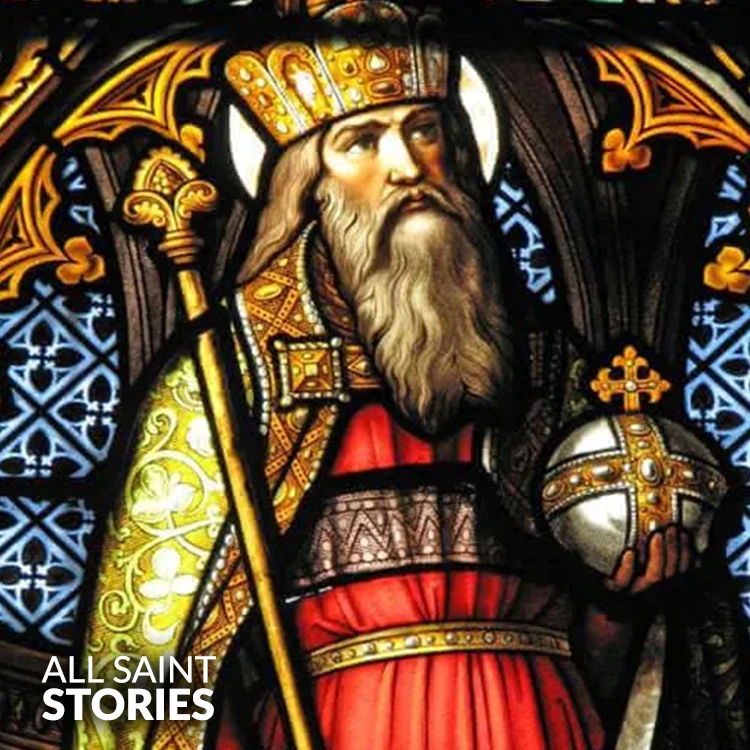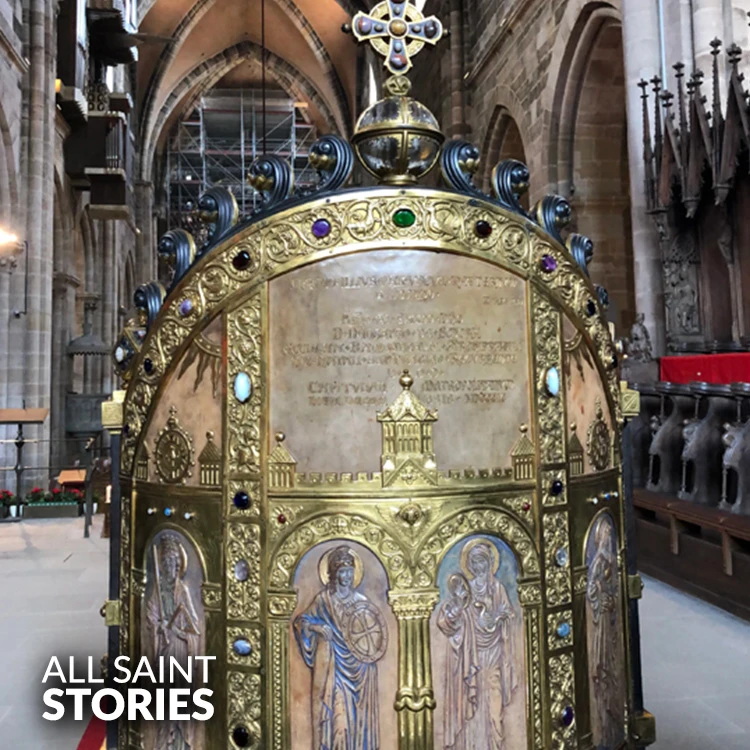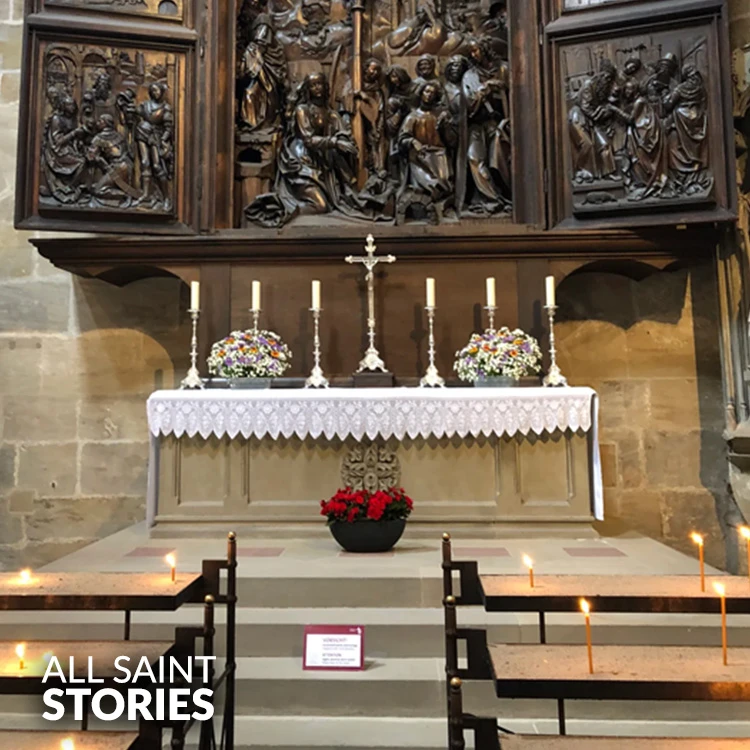O God, whose blessed Son became poor that we through His poverty might be rich: Deliver us from an inordinate love of this world, that, inspired by the devotion of your servant Henry, we may serve you with singleness of heart and attain to the riches of the age to come; through Jesus Christ our Lord. Amen.
ST. HENRY II
ST. HENRY II

Saint Henry II was the Holy Roman Emperor known for his devout faith and political leadership. He promoted Church reforms, established dioceses, and was canonized for his dedication to the Christian faith and social justice.
Saint Henry II, also known as Henry the Saint, was born on May 6, 972, in the Duchy of Bavaria. As a member of the Ottonian dynasty, he ascended to become Duke of Bavaria, King of Germany, King of Italy, and eventually the Holy Roman Emperor. Henry's reign was marked by deep religious commitment and a vision of governance closely aligned with Christian principles. He married Cunigunde of Luxembourg, who was also later canonized, and the couple, although childless, were deeply devoted to religious life and charitable works.
Henry worked tirelessly to strengthen the Church’s role within the empire. He reorganized dioceses and established new ones, including the Bishopric of Bamberg, which he endowed generously. This reflected his vision of a Christian empire with a strong ecclesiastical foundation. He sought to reform the clergy, promoted monastic life, and ensured bishops were chosen based on piety and knowledge rather than political favors. Henry saw the emperor’s role as divinely appointed and believed in defending and expanding Christendom.
Politically, he was a shrewd ruler, successfully defending the empire against internal revolts and external threats, including campaigns in Italy and against Slavic tribes. Despite his success in war, he prioritized peace and justice within his realm. His legal reforms and devotion to fairness earned him great respect among his subjects.
Henry died on July 13, 1024, and was buried in Bamberg Cathedral. His canonization in 1146 by Pope Eugene III made him the only Holy Roman Emperor to be declared a saint. His feast day is celebrated on July 13, and he is regarded as a patron saint of childless couples, the disabled, and those seeking just governance. He remains an example of Christian kingship—combining political authority with devout service to God and the Church.
Video Not Found
The information you see here may be either accurate or might contain some discrepancies, as it is gathered from various sources. If you believe that any part of the details about this saint is incorrect or incomplete, we kindly invite you to share your suggestions or corrections with us. Your insights are invaluable in helping us ensure that we provide the most accurate and reliable information.
We encourage you to use the form on the left to submit any corrections or additional information you may have. Whether it's a small detail or a larger correction, we will carefully review your submission and update the information accordingly. Your contributions will not only help us maintain the integrity of the content but also benefit others who seek to learn more about this saint. We greatly appreciate your assistance in making our information more accurate and complete.
Please rest assured that your personal details will remain confidential, and your suggestions will be handled with the utmost care. Together, we can ensure that the information about this saint is as accurate and informative as possible. Thank you for your time and contribution!
If you have any suggestion about ST. HENRY II
Your suggestion will help improve the information about this saint. Your details will not be disclosed anywhere.
© 2025 Copyright @ www.allsaintstories.com




 English
English
 Italian
Italian
 French
French
 Spanish
Spanish
 Malayalam
Malayalam
 Russian
Russian
 Korean
Korean
 Sinhala
Sinhala
 Japanese
Japanese
 Arabic
Arabic
 Portuguese
Portuguese
 Bantu
Bantu
 Greek
Greek
 German
German
 Dutch
Dutch